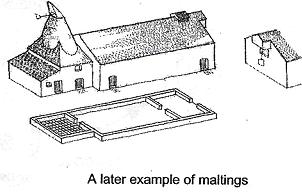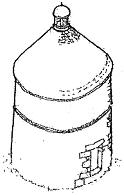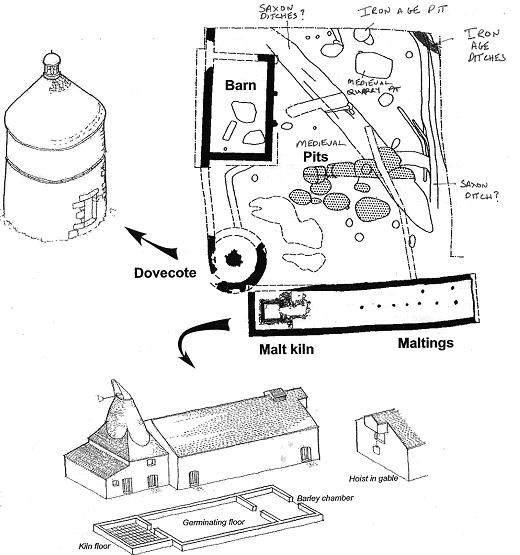

EXCAVATIONS AT LIME STREET, IRTHLINGBOROUGH
Houses are being built by Acorn Homes on the former allotment gardens at Lime Street, Irthlingborough. As a condition of planning permission, archaeological features which have been buried under the site for centuries have been excavated. The work was requested by Northamptonshire County Council’s Environment Team since the housing development would damage the remains. It was carried out by Northamptonshire Archaeology, a service of Northamptonshire County Council.
The allotments, long an undeveloped feature of the modern Lime Street, have helped to preserve the remains until such a time as this when national interest in archaeology and local authority planning conditions can combine to ensure their record for posterity.
There is evidence of people living here for over 2000 years. There is a small part of an Iron Age farming enclosure, together with Saxon pits and ditches but it is the remains of the medieval stone buildings which can be seen upstanding which are the latest and most complete aspect of the site, having been preserved beneath the allotments.

The remains of three medieval agricultural buildings lie around a courtyard off Lime Street. They comprise a long (23m x 6m or 75ft x 20ft) range with a deep, wide malting oven opening at one end. Here barley may have been stored and dried for beer making. The ash at the kiln base is from the last fire lit there to dry the crop, sometime in the 14th century.
At one corner of the site lay a former rectangular building (11m x 7m or 36ft x 23ft) with heavily buttressed walls. Little can now be seen of this. The stone used to build it had been almost entirely dug out after its demolition so we know little of how it looked. Its buttresses suggest it was substantial and fragments of tile stones indicate its roof was of stone, of a type common in northeast Northamptonshire, particularly around Collyweston. The floor of the barn did not survive so we do not know what was stored in it. Possibly it was for crops or it may have been for livestock or even a cart shed.
 DOVECOTE
DOVECOTE
The remains of a near circular building are a former dovecote, of 8.3m or 27ft diameter. Doves, or more properly pigeons, added variety to diet when other meats were unavailable, particularly during winter to spring when cattle and sheep were calving/lambing. In the centre of the dovecote lay a stone base, called a ‘potence’, on which to foot the ladder needed to reach the nesting boxes high up in the usually windowless structure. The dovecote here may have been demolished as early as the 14th century. The contents of the building included very many bird bones, suggesting that not all the stocks ended up on the table. Presumably they were regular prey for foxes and cats and many fledglings would have fallen from their nests. The remains of two cows have been found beneath the floor, testament to earlier patterns of food consumption – or possibly its waste as the carcasses had not been fully butchered for the table before their burial.
We know little of who used these buildings as no houses as such have been found in the excavation area. There are no hearths or kitchens, no hall or chapel. It may be that they relate to a manor house known to have stood nearby. In any case they give us a glimpse of the complex agricultural economy of relatively wealthy rural folk in Northamptonshire at the height of the middle ages. It is possible that more pieces in this particular jigsaw puzzle lie under the gardens and houses roundabout. So keep your eyes open!
